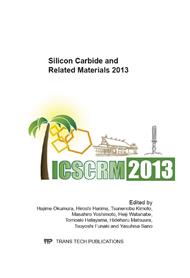p.808
p.812
p.816
p.820
p.824
p.828
p.832
p.836
p.841
4H-SiC Diode Avalanche Breakdown Voltage Estimation by Simulation and Junction Termination Extension Analysis
Abstract:
This paper presents and compares different avalanche breakdown voltage estimation methods in 4H-SiC (silicon carbide) using finite element simulation results on Schottky diode. 4H-SiC avalanche breakdown voltage and depletion width estimated with Baligas equations have shown to be higher than other estimation techniques and simulation results, especially for voltages higher than 5kV. This paper discusses the impact of choosing different junction termination extension (JTE) structures on two-dimensional junction curvature effects and electric field crowding for Schottky diodes Space-Modulated JTE (SMJTE) structure with optimum JTE dose and dimension could achieve up to 90% of the parallel plane breakdown voltage. For ultra high voltage devices (>15 kV) the SMJTE has significant improvement in terms of breakdown voltage. It also has a wider optimum JTE dose window. For 1 kV device there is not a significant difference in breakdown voltage between JTE and SMJTE structures.
Info:
Periodical:
Pages:
824-827
Citation:
Online since:
February 2014
Authors:
Price:
Сopyright:
© 2014 Trans Tech Publications Ltd. All Rights Reserved
Share:
Citation:


